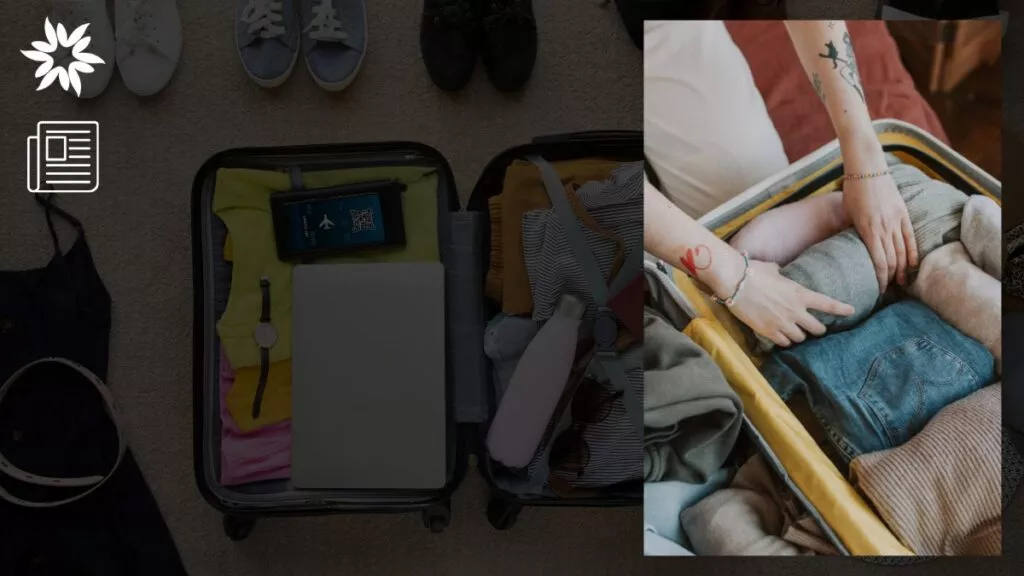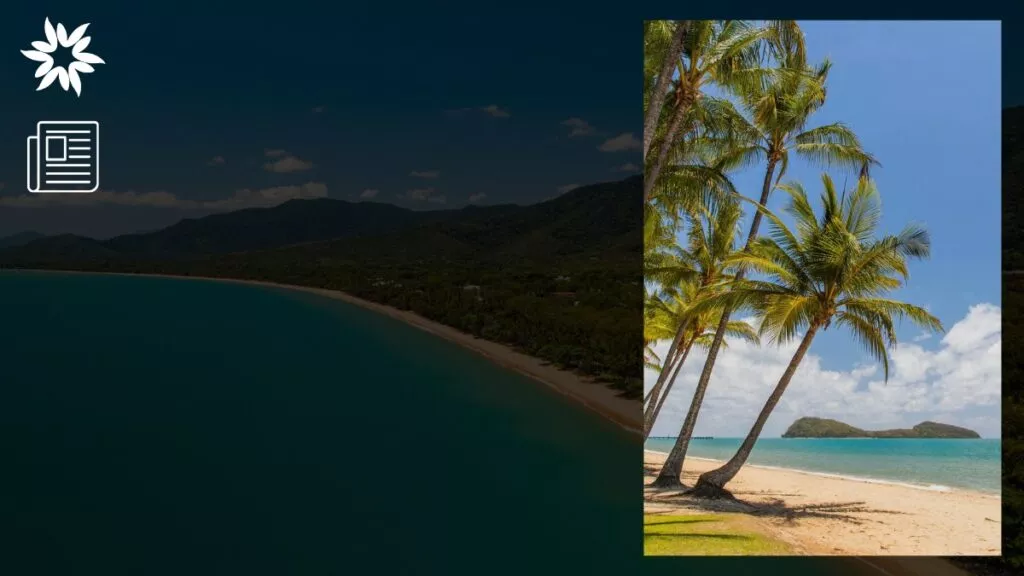Namibia is a beautiful country with vast deserts, stunning landscapes, and unique wildlife, making it a prime destination for tourists.
This guide covers essential travel tips for safely touring the country, including visa requirements, currency, health precautions, and transport options.
Key Takeaways
- Most US, UK, and EU travelers can visit Namibia for up to 90 days without a visa. Ensure your passport is valid for at least six months and has blank pages.
- Namibia uses the Namibian Dollar, pegged 1:1 to the South African Rand. ATMs are available, but carrying cash for fuel is advisable.
- Update routine vaccinations and consider shots for Hepatitis A, B, and Typhoid. Malaria prophylactics are recommended for specific regions.
Where Is Namibia Located?
Namibia is a southern African country located on the continent’s west coast. It is bordered by South Africa to the south, Angola to the north, and Botswana to the east.
Namibia is also home to the world’s only quadripoint, where the borders of Namibia, Botswana, Zambia, and Zimbabwe meet.
This unique geographical feature is located in the far northeastern part of the country, although it is in a less-visited region known as the Caprivi Strip.
Safety in Namibia
Namibia is mostly a safe place to visit, but there are some things to watch out for.
The main issue for tourists is petty crime, such as pickpocketing, bag snatching, and car theft, especially in cities like Windhoek.
Serious crime happens but is rare for tourists. To stay safe, don’t show off valuables, be careful at ATMs, and stay alert, especially after dark.
Driving in Namibia can be tricky. Roads are often long, with wildlife crossing and lots of gravel roads in poor condition. Avoid driving at night, and make sure your car has spare tires and a first-aid kit. Always keep a charged phone and emergency contacts handy.
Natural dangers include scorching temperatures in the desert and possible flooding during the rainy season (November to March). Always check the weather before traveling and plan accordingly.
Best Time to Visit Namibia
The best time to visit Namibia is during the dry season, from May to October. The weather is cooler, and animals gather around waterholes, making it easier to see them.
This is also the most popular time for safaris in places like Etosha National Park.
The rainy season is from November to March. During this time, the landscape becomes green, and there are fewer tourists, but it can be hotter, and there might be occasional flooding.
If you visit, prepare for sudden weather changes and possible road closures.
Top 10 Namibia Travel Destinations
Here are some of the top destinations in Namibia that you should consider visiting:
1. Sossusvlei
Located in the Namib Desert, Sossusvlei is famous for its massive red sand dunes, some of the highest in the world.
One of the most iconic dunes is Dune 45, which you can climb for spectacular views, especially at sunrise or sunset when the colors are most vibrant.
Nearby is Deadvlei, a white clay pan dotted with ancient, dead camelthorn trees, providing a stark yet stunning landscape.
2. Etosha National Park
Etosha National Park is one of Africa’s premier wildlife destinations. The park is home to a wide variety of animals, including elephants, lions, rhinos, and giraffes.
The Etosha salt pan, which dominates the park, is surrounded by numerous waterholes where you can see animals congregating, especially during the dry season.
This park also offers self-drive safaris, but guided tours are recommended for a richer experience.
3. Fish River Canyon
Known as the “Grand Canyon of Africa,” Fish River Canyon is the second largest canyon in the world.
It’s a popular spot for hiking, with a famous five-day trail that takes you through the canyon’s dramatic landscapes.
Even if you’re not into long hikes, there are several viewpoints where you can take in the breathtaking scenery.
4. Skeleton Coast
The Skeleton Coast is named for the numerous shipwrecks that line its shores. This remote, rugged coastline offers a unique experience with its eerie, desolate beauty.
This coastal area is also home to the Cape Cross Seal Colony, where you can see thousands of seals, especially during the breeding season in November and December.
5. Swakopmund and Walvis Bay
These coastal towns offer a range of activities, from adventure sports to wildlife viewing.
Swakopmund is known for its German colonial architecture and is a hub for activities like sandboarding, quad biking, and skydiving.
Walvis Bay, on the other hand, is famous for its lagoon, which attracts a variety of bird species, including flamingos.
6. Damaraland
Damaraland is known for its rugged terrain and ancient rock art. The area is home to the famous Twyfelfontein rock engravings, a UNESCO World Heritage site.
You can also visit the Petrified Forest and see the famous desert-adapted elephants.
7. Namib-Naukluft National Park
This park is one of the largest conservation areas in Africa and includes some of Namibia’s most iconic landscapes, including the Sossusvlei dunes and the Naukluft Mountains.
The park offers excellent hiking opportunities and a chance to see diverse wildlife.
8. Spitzkoppe
Often referred to as the “Matterhorn of Namibia,” Spitzkoppe is a group of granite peaks that rise dramatically from the surrounding plains.
Due to its clear, dark skies, it’s a popular spot for rock climbing, hiking, and stargazing.
9. Waterberg Plateau National Park
This park features a massive sandstone plateau and is known for its hiking trails, diverse flora and fauna, and sanctuary for endangered species like the black rhino.
The area is rich in history and offers stunning views from the plateau.
10. Caprivi Strip
Now known as the Zambezi Region, this area is characterized by lush wetlands and rivers, a stark contrast to the arid landscapes of most of Namibia.
It’s an excellent destination for bird watching, fishing, and experiencing the local culture.
Travel Tips for Visiting Namibia
Before starting your Namibian adventure, here are some essential travel tips for a safe and enjoyable experience:
- Visa Requirements: Most US, UK, and EU travelers don’t need a visa to visit Namibia for up to 90 days. However, it’s best to check your country’s specific requirements before you travel. Make sure your passport is valid for at least six months from your entry date and has at least one blank page for stamps.
- Currency: Namibia uses the Namibian Dollar (NAD), which is equal in value to the South African Rand (ZAR). Both currencies are accepted throughout the country. ATMs are located in major towns and cities, and credit cards are widely accepted in hotels, restaurants, and shops. If you are driving yourself, carry enough cash for fuel since not all petrol stations accept cards.
- Health: Ensure your regular vaccinations are up-to-date. Depending on where you plan to go, you might need shots for Hepatitis A, Hepatitis B, and Typhoid. Malaria is a risk in northern areas like Etosha and the Caprivi Strip, especially during rains (November to June). It’s recommended that malaria pills be taken and insect repellent used.
- Local Etiquette: Namibians are friendly and welcoming. When visiting rural areas or interacting with local communities, dress modestly and ask for permission before taking photos. It’s also polite to greet people with a handshake and a smile.
- Packing Essentials: Bring lightweight, breathable clothing for the hot days and warmer layers for the cool nights. Don’t forget a good hat, sunscreen, and sunglasses to protect yourself from the strong sun. Sturdy walking shoes are a must for exploring diverse landscapes. Plus, a high-quality camera helps capture the stunning scenery and wildlife.
- Language: English is the official language and is widely spoken, making it easy for travelers to communicate. However, you may also hear Afrikaans and various Indigenous languages.
- Electricity: Namibia uses a type D and M power plug with a standard voltage of 220V. If your devices have a different plug type, bring a universal adapter.
- Water and Food: Tap water is generally safe to drink in cities and towns, but it’s advisable to drink bottled water in remote areas. Namibian cuisine often includes game meat, but you’ll also find a variety of international dishes. If you have dietary restrictions, inform your lodge or restaurant in advance.
- Driving Tips: In Namibia, people drive on the left side of the road. Roads are often gravel and can be challenging, so renting a sturdy vehicle like a 4×4 is recommended, especially if you plan to explore off the beaten path. Always carry extra fuel and water, as gas stations can be far apart.
Plan Your Namibian Travel Adventure Today!
Now that you have all the information you need, it’s time to start planning your trip to Namibia.
Pack your bags, organize your travel documents, and prepare for the adventure of a lifetime. If you need ideas of where to visit, use this guide to plan your trip and make the most of your adventure.
There’s much to experience in Namibia, from thrilling safaris to breathtaking desert dunes. Don’t miss the opportunity to explore this incredible destination and create unforgettable memories!








